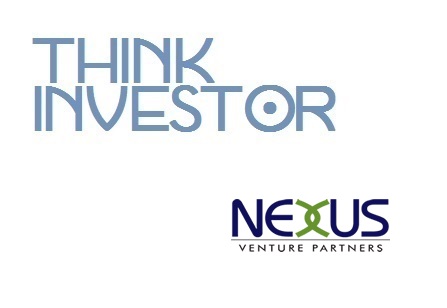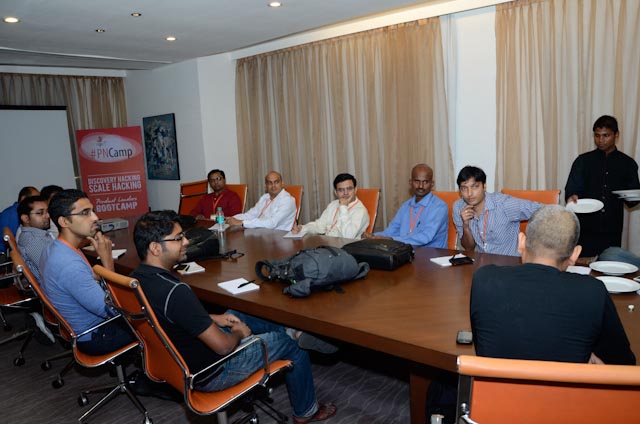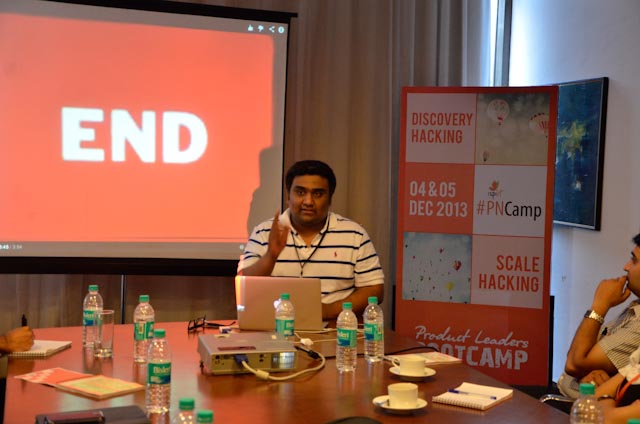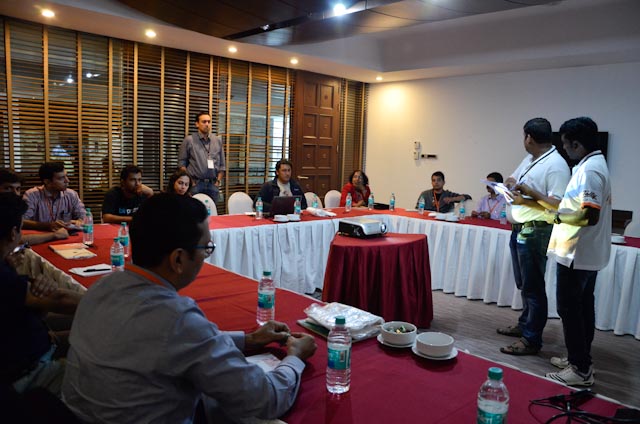ThinkInvestor is iSPIRT and ProductNation’s new initiative to serve as a catalyst between Venture Capital firms, Angels, Angel Networks and Entrepreneurs. It is to go beyond brochure ware and dig deeper into the whole life cycle of a typical investment; from introductions, funding, styles of on-going engagement, to exits. And in the process, capture their views on global and local trends, and the entrepreneurial ecosystem in India.  Nexus Venture Partners invest in early and early growth stage companies across sectors in India and US. They are a team of successful entrepreneurs with extensive investing and operating experience, who love to get their hands dirty. They understand the unique challenges faced by entrepreneurs and know that it takes teamwork and exceptional execution capability for a company to succeed. Their partner companies have access to the entire Nexus team in India and Silicon Valley for help in recruiting talent, forging new alliances, opening doors to new customers, shaping strategy and connecting with best-of-breed executives, advisers, co-investors and board members.
Nexus Venture Partners invest in early and early growth stage companies across sectors in India and US. They are a team of successful entrepreneurs with extensive investing and operating experience, who love to get their hands dirty. They understand the unique challenges faced by entrepreneurs and know that it takes teamwork and exceptional execution capability for a company to succeed. Their partner companies have access to the entire Nexus team in India and Silicon Valley for help in recruiting talent, forging new alliances, opening doors to new customers, shaping strategy and connecting with best-of-breed executives, advisers, co-investors and board members.
ProductNation sat down with Sandeep Singhal, Co-Founder of Nexus Venture Partners for this interview.
 Avinash Raghava of iSPIRT and ProductNation thanked Sandeep for his, and Nexus VP’s outstanding support and encouragement for the upcoming InTech50, a platform where Indian product companies showcase their arrival on the global landscape at the Leela Palace in Bangalore, April 9th – 10th, 2014! More information on this event is here!
Avinash Raghava of iSPIRT and ProductNation thanked Sandeep for his, and Nexus VP’s outstanding support and encouragement for the upcoming InTech50, a platform where Indian product companies showcase their arrival on the global landscape at the Leela Palace in Bangalore, April 9th – 10th, 2014! More information on this event is here!
Here’s what we heard in the interview:
Tell us a little bit about Nexus Venture Partners – The size of your fund, stage and focus.
Nexus Venture Partners is a $270M fund. We are on our third fund and our funds are of the typical 10 + 2 years extension lives of venture funds. In each fund, the first half of the ten years is spent finding and funding companies, and the second half is used nurturing and finding additional rounds of financing for them. We raised our third and latest fund in March 2012. We are about halfway through the investment cycle for this fund. We are primarily a Series A investor. $2M to $5M is our sweet spot. We do some seed investments if the market is large enough, and the company still needs to think through its technology or market risk more thoroughly. And we are convinced that it is a company we need to support on a longer term basis. We have been involved in a few Series B investments also. These happen in case we missed out at the Series A stage and they took money from somebody else. Regarding our focus areas, we are primarily interested in cross-border opportunities; India based companies interested in the US market or US based companies interested in the Indian market. We are also interested in the retail space in India that is experiencing exponential growth; e-commerce, e-retail or e-commerce enablement companies. We are interested in Healthcare and Education verticals. Eye Q is a good example of our healthcare investment in the Ophthalmology space. We are interested in Hub and Spoke models, especially in Education. We are also interested in enterprise technologies, mostly software (open source in particular) and cloud based. We haven’t done anything in hardware.
What’s the best way for an entrepreneur to get in touch with you? What works and what does not?
We are known to be approachable. While it is always best to get an introduction, we do respond to emails also. We ask people to send us a business plan if through email. We get a lot of referrals from our portfolio companies, and their founders. A number of these are already vendors to our portfolio companies. We also do outreach efforts like conferences where we meet entrepreneurs and get to know their companies. A number of entrepreneurs are still learning the ropes in India, and we want to help the ecosystem by being a bit flexible on how they reach us and at any stage of their development. We provide them feedback on how ready they are, or are not, for an investment. Sometimes it works, and sometimes that feedback is ignored!
How long does it take for you to decide on investing? What is your due diligence process?
That’s a very situation-specific timeline. In one case, we had an entrepreneur come to us for investment but 90% of their company revenue was from services and was not suitable for us. They however had a plan to switch their company from a services focus to a product focus and kept in touch with me. They had a clear marketing and sales plan to move to a product focus and when they came to us again, 80% of their revenues were coming from products. This took 2 years but is not typical. In some situations, if the company is very early but have a compelling product there is not much you can glean from numbers at that stage. We made a decision to invest in as little as 1 week in such cases. Typically it takes 2 weeks to a month for business diligence and a month to a month and a half for closure. Overall about 2 to 3 months for the whole process. Our process typically consists of Business and Financial Due Diligence. For the business part, we are looking at four key things:
1. The Team – How good is the management team, are the members complementary to each other?
2. The Market – How big is the market? What are the pain points in the market? How is this company addressing them? Will the customer pay for addressing this pain?
3. The Competition – If there are competitors in this market, who are they?
4. Capital Efficiency – When would the next capital event for this company be? How long would raising $2M to $3M last for this company and can they get to the next funding event successfully with enough growth?
These four areas would take about 2 weeks to a month to get a handle on. But as they are talking to us, we introduce them to potential customers and see how they do. The Financial Due diligence for very early stage companies is not very much since the numbers may not mean much at that stage except looking at things like whether they are incorporated properly. If they have a few customers already, then we make sure that audits have been done properly. In India at least, with $2M to $3M investments, we have been a solo investor for the most part. In the US, it has been a mixed bag with more syndicates with other investors.
What’s your style of engagement once you have funded a company?
We think of our role as a facilitator once we have funded a company. We have never taken a majority position in any company. We are an Active Investor driven mostly by what the entrepreneur needs from us. In the beginning it has to do with strategy and team building. Do they have the best talent available? If not, can we help them get the best talent? We help our portfolio companies with strategy around how to compete better, and grow faster as needed. Most of our entrepreneurs say that we add value on their boards of directors. We help portfolio companies with partner and customer introductions. We make sure that they are done at the right time, and in the right way. Sometimes the company may not be ready as yet for a customer introduction since the product may not be ready enough.
Do you have any formal meetings of CEOs/CXOs of your portfolio companies?
We have shied away from doing those kinds of meetings since it always inconveniences someone, to be away, and at a particular place. All of our CEOs are at our annual Nexus meeting. We end up doing a lot of things one on one. Every company in our portfolio is welcome to interact, communicate, and ask for help from anybody on the Nexus team, no matter who is on the board. This helps a lot since the chances of getting that help is more, with the entire team.Someone in our team may have seen a similar situation or handled a similar problem recently with one of their companies.
What are some of the exciting companies in your portfolio now? Exciting new business models?
All of our portfolio companies are exciting to us. We have had some exciting investments in e-commerce companies like BigShoeBazaar (BSB). On the product side we have had some exciting companies like Druva, Kaltura and Aryaka. Datagres relocated recently to Silicon Valley. Scalarc is an exciting investment in the cloud computing space. All these companies have already gone through the gauntlet of passing technology risks, having the products in the hands of customers and scaling revenues. Pubmatic had scaled quite a bit.
What are your thoughts on exits for your portfolio companies? Thoughts on recent exits like Little Eye Labs or Redbus?
We have had successful exits with 8 of our portfolio companies. all strategic mergers and acquisitions (M&As). All them were cross borders ones also. The US primary market for M&As is still showing a lot of strength, but not the Indian domestic market. I don’t expect things to improve till the elections are over. When it is over, I expect the demand in India for high growth companies to grow rapidly. Nexus Venture Partners does not build companies for acquisition but for public listing! We have found it useful to advice our portfolio companies to have a 5 to 7 year horizon and plan for revenues that will help them have a successful IPO. In the course of building such companies, successful M&A opportunities may arise and if they do well and good! Companies like Nimble Storage or NetApp were built this way and that’s what we advice our portfolio companies! The Little Eye Labs and the Redbus exits are all good news for the Indian ecosystem even though the former might have been an acqui-hire one. Exits like these make corporate development teams abroad sit up and take notice of Indian start-ups!
What advice do you have for the Entrepreneurial Ecosystem in India?
I have four pieces of advice for new entrepreneurs in India:
1. Work on global products – Test your hypothesis globally – Before developing a line of code test out your product hypothesis globally. May be with the help of a friend abroad if need be.
2. Build cross-Border companies from Day One – Focusing only on the India market first and then scaling globally will cost companies 18 to 24 months in time lost. Reduce this time by working with a cross-border co-founder from the start. This is will prove to be highly valuable.
3. Focus on growth and not just surviving – Growth is as important as cash flow. Speed of growth is critical. It takes a lot of confidence to grow quickly even if takes raising more money rather than just focus on cash flow.
4. Be more confident globally – We still see a lack of confidence in Indian companies when considering to go global. No reason to be so!
If someone comes to you from a services company with a product idea what would your advice be?
I would first assess whether this person understands what it takes to build a product and a product company. The services model is very different, The person may be very strong technically. I would still ask them to pair up with a strong product management person that has done proven products for the global marketplace. There needs to be a good marriage between the technical and product management skills. I still see a lot of Indian entrepreneurs come to us with Indian versions of products in the global marketplace, but wanting to compete on lower price. I strongly discourage these kinds of entrepreneurs since the labor arbitrage argument does not take into account the price of on-going innovation. Innovation and differentiation needs to be priced into the equation. You don’t need large teams but you need the best teams. They cost the same whether they are in Silicon Valley or Bangalore! Competing on price makes you compromise on innovation and in the long run does not work!
 There has been an acceleration since 2010 in the pace of creation of B2B companies. Vertically-focused offerings in retail, travel, financial services, media have reached scale and we are likely to see some larger exits in terms of IPOs or M&A over the next couple of years. In parallel, we are seeing horizontal offerings targeting global markets emerge and start to breakout of India into the US and other global markets – we are starting to see not only India-based venture funds backing these companies but also Silicon Valley funds coming in once there is initial customer adoption in the US.
There has been an acceleration since 2010 in the pace of creation of B2B companies. Vertically-focused offerings in retail, travel, financial services, media have reached scale and we are likely to see some larger exits in terms of IPOs or M&A over the next couple of years. In parallel, we are seeing horizontal offerings targeting global markets emerge and start to breakout of India into the US and other global markets – we are starting to see not only India-based venture funds backing these companies but also Silicon Valley funds coming in once there is initial customer adoption in the US.






